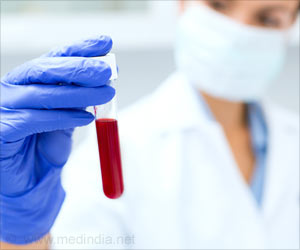Prostate cancer stem cells can be identified among low prostate specific antigen (PSA) expressed in the tumor cells, say researchers.

Hormone therapy is used to block production of testosterone, which fuels prostate cancer growth, via either chemical or physical castration. Tumors eventually resist this approach.
In cell lines and mouse model experiments, the low-PSA cells resisted chemotherapy and thrived under hormone deprivation, the two main prostate cancer drug treatments , the researchers found.
Low-PSA cells were found to be both self-renewing and capable of differentiating into other prostate cancer cell types upon division, a hallmark of stem cells called asymmetric cell division.
"Asymmetric cell division is the gold standard feature of normal stem cells," Tang said. "Using time-lapse fluorescent microscopy, we were able to show asymmetric cell division by filming a low-PSA cell dividing into one high-PSA cell and one low-PSA cell."
Their findings point to the need to develop new therapeutics to target low-PSA prostate cancer cells that can be combined with hormone therapy to wipe out cancer cells and prevent recurrence.
Advertisement
Previous research by others indicated that low-PSA tumor cells are rare in early stage disease but become more abundant in advanced prostate cancer. And patients whose tumors were composed of more than 50 percent PSA-positive cells enjoyed longer survival.
Advertisement
They analyzed 20 untreated prostate cancer samples staged at varying degrees of aggressiveness on the Gleason scale and 23 samples where treatment had failed. High-PSA tumor cells composed on average about 80 percent of the Gleason 7 tumors, about 60 percent of the higher grade Gleason 9/10 tumors but only about 15 percent of the treatment-failed tumors.
A database analysis of gene expression in prostate cancer was consistent with the tumor experiments, indicating an association between low levels of PSA in tumors and disease recurrence, spread to lymph nodes, metastasis and shortened patient survival.
Turning high-PSA cells green
The next challenge was separating the two cell types to understand their biological, tumor-initiating and drug-response properties.
Tang and colleagues developed a lentiviral delivery system equipped with a PSA promoter that triggers green fluorescence protein when PSA is expressed in an infected cell.
This lentiviral reporter system allowed separation of low-PSA and high-PSA cells for the first time, Tang said. A series of experiments uncovered striking differences between them.
High-PSA prostate cancer cells:
- Divide rapidly, which makes them vulnerable to chemotherapy that targets fast-proliferating cells;
- Express high levels of the androgen receptor, a key to testosterone production, and so are vulnerable to hormonal therapy; and
- Produce only identical copies of themselves when they divide.
Low-PSA prostate cancer cells:
- Divide slowly and express anti-stress genes that help them resist chemotherapy;
- Either lack or have a weak presence of the androgen receptor, allowing them to grow while hormonal therapy wipes out PSA-positive cells; and
- Can divide into one copy of themselves and one PSA-positive cell during reproduction. The researchers captured this on video microscopy, filming the division of a grey low-PSA cell into one copy of itself and one copy of a vibrantly green PSA-positive cell.
Low-PSA tumors have long-term tumor-generating capacity
When the team implanted the two cell types in hormonally intact male mice, the rapidly reproducing PSA-positive cells caused faster growth and larger tumors in the first generation. However, after that the low-PSA cells generated larger, faster-growing tumors and tumor incidence in the high-PSA cells dropped. In fact, the low-PSA prostate cancer cells possess indefinite tumor-propagating capacity.
In contrast, when implanted in the castrated mice, the low-PSA prostate cancer cells developed much larger tumors than the corresponding high-PSA cells. In another experiment, mice with tumors generated by either cell type were then castrated and treated with hormonal therapy. Low-PSA tumors grew better in these doubly androgen-deprived mice than the high-PSA tumors.
"These findings closely resemble progression observed in patients after androgen-deprivation treatment and reflect reducedPSA-producing cells in patient tumors after androgen depletion," Tang said.
Effect of low-PSA cells in human tumors
Tang and colleagues analyzed tumor cell PSA expression in 556 human tumors and found low protein levels correlated with reduced overall survival.
They separated the two types of cells in three primary human tumors and found that low-PSA cells did not express androgen receptor and have higher cell-generating and sphere-forming capabilities than high-PSA cells.
Future research will focus on developing therapeutic targets for low-PSA cells and illuminating the epigenetic landscapes of both cell types.
Source-Eurekalert















